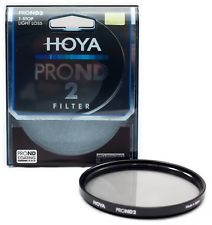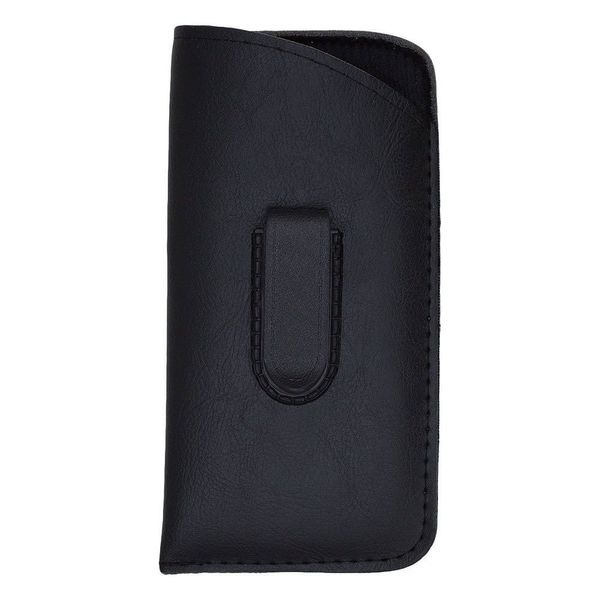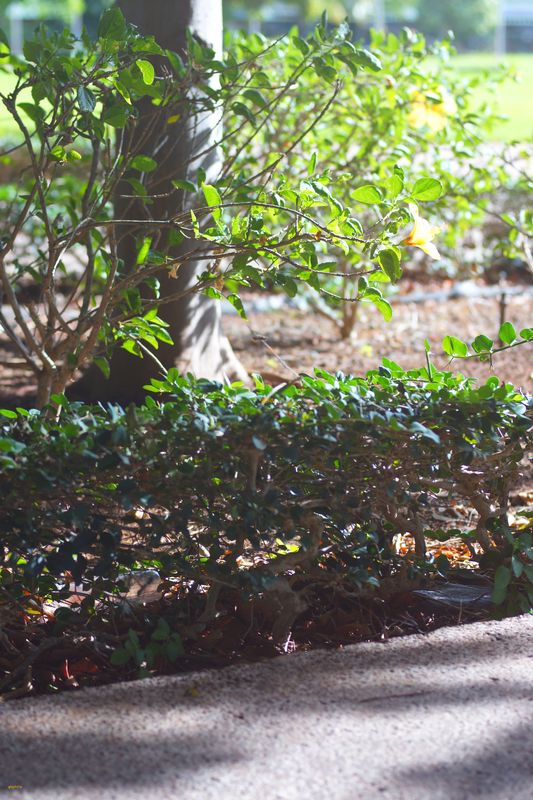Posts for: glyphtrix
Jan 4, 2018 17:43:49 #
RESOLVED: Kipon. K/AR to Nex adapter $60. Adorama camera.Adapter works beautifully with Sony Nex 7 and konica hexanon AR mount "AE" & OLDER "EE" marked lenses.
The lenses fit effortlessly and the aperture rings turn freely.
This wasn't a simple question. Several Cheap $10/$20 adapters actually worked well for 3 other brands ( Exacta, C mount, Pentax K).
But this was not the case for the Konica Hexanon lenses: The cheap adapters DID not work with the Konica lenses.
The lenses fit effortlessly and the aperture rings turn freely.
This wasn't a simple question. Several Cheap $10/$20 adapters actually worked well for 3 other brands ( Exacta, C mount, Pentax K).
But this was not the case for the Konica Hexanon lenses: The cheap adapters DID not work with the Konica lenses.
Dec 22, 2017 17:49:18 #
Specifically, I am trying to use a Konica Hexanon 57mm F1.4 with EE marking on aperture ring (Even OLDER than AE) on a SONY E mount NEX 7 camera.
Has any of the million members found an AR to Nex adapter that actually works; that allows the aperture ring to work And doesn't have light leaks either?
I've purchased 2 Ebay cheap China wonders: "Ar - Nex" and "Konica - Nex".
Neither adapter allows the aperture ring to move when attached.
I've read "Rainbow" adapters might be made to work work (if a misplaced screw is removed).
And the $60 Fotodiox adapter works sometimes and sometimes doesn't work any better than the cheap adapters.
Has anyone found an adapter that actually works with this lens and camera combination?
Thank you For your help.
Has any of the million members found an AR to Nex adapter that actually works; that allows the aperture ring to work And doesn't have light leaks either?
I've purchased 2 Ebay cheap China wonders: "Ar - Nex" and "Konica - Nex".
Neither adapter allows the aperture ring to move when attached.
I've read "Rainbow" adapters might be made to work work (if a misplaced screw is removed).
And the $60 Fotodiox adapter works sometimes and sometimes doesn't work any better than the cheap adapters.
Has anyone found an adapter that actually works with this lens and camera combination?
Thank you For your help.
Dec 6, 2017 13:41:15 #
rmalarz wrote:
When not on my camera lenses, I put the filter in the protective package in which it was purchased. B+W filters have a wonderfully padded plastic box.
--Bob
--Bob
Thanks Bob! That confirms my suspicions about their optical frailty.
The other problem I'm experiencing is toting TOO MANY plastic lens boxes.
The Filter hive system and stack caps seem like they might help with the storage and transport organizational issues.
Dec 6, 2017 13:33:57 #
[quote=fergmark]
Yes. THIS is what concerned me: the filters are optical glass just like the lenses. So it didn't seem a great idea to allow them to rub against many of the different materials used in lower priced pouches and wallets.
I wouldn't place any lens unprotected in just any plastic sleeve. Thanks for the confirmation.
rmalarz wrote:
i use b+w also . i treat them like any lens. with great care
i use b+w also . i treat them like any lens. with great care
Yes. THIS is what concerned me: the filters are optical glass just like the lenses. So it didn't seem a great idea to allow them to rub against many of the different materials used in lower priced pouches and wallets.
I wouldn't place any lens unprotected in just any plastic sleeve. Thanks for the confirmation.
Dec 6, 2017 13:29:34 #
wdross wrote:
I use stack caps. .
I had wondered if such a thing existed.. I've been using unwanted filters to sandwich my good ones . Thanks!
Dec 5, 2017 20:21:00 #
rgrenaderphoto wrote:
Look at Mindshift Gear's Filter Hives. Lined with soft fabric, the one for round filters has space for 6. There is also one that will fit 100mm square/rectangular filters like Lee's.
https://www.mindshiftgear.com/products/filter-hive
The inner case fits nicely in my Camera Backpack.
https://www.mindshiftgear.com/products/filter-hive
The inner case fits nicely in my Camera Backpack.
SWEET!
Thanks very much! I realize that people who get paid for photography- probably don't recycle eye glass holders to protect their investments...


Dec 5, 2017 20:17:22 #
Peter Franck wrote:
I know, that my question is not formulated correctly, because "different strokes for different folks".
I'm new to "real" editing and currently use Capture NX-D by Nikon, which was free of charge and I downloaded it from the Nikon site.
Before I get too familiar with NX-D, I'd like to here your take on editing software. I do look for something that is user friendly, even if it only available for a one time charge or a monthly user fee.
Thanks, Peter
I'm new to "real" editing and currently use Capture NX-D by Nikon, which was free of charge and I downloaded it from the Nikon site.
Before I get too familiar with NX-D, I'd like to here your take on editing software. I do look for something that is user friendly, even if it only available for a one time charge or a monthly user fee.
Thanks, Peter
I am highly OPPOSED to pay-through-the-nose- Sorry, I meant pay-by-the-month-FOREVER-subscriptions..
Checking in from the alternative/free/shareware/one-time-purchase-crowd:
For Windows:
FOTOR
PIXLR
Photoscape : A very good general purpose program, ALSO EASY TEXT & clone stamping! (Possibly competitor of ON 1)
Photofiltre 7: The UK shareware version of Photoshop.
Inpixio photo clip pro 7: Background and object removal SUPER EASY masks. AND Portrait Beauty makeover filters
(Amazing customer service too: Replaced my program FREE after machine died!)
Photopad Image editor: Simple but handy!
Photo Pos Pro 3 (Handles RAW and a lot that PS can do including Text,masks, layers, image leveling, perception changes and other optical tricks)
Gimp: Does Everything
MicroSoft ICE Image Composite Editor: (Panoramas)
Handy Phone touch ups:
For Android: Fotor. Pixlr, Snapseed (A google program) ,
Back ground swaps / object removals:
Touch-Retouch
PhotoDirector by Cyberlink,
Dec 5, 2017 18:36:13 #
PixelStan77 wrote:
Avoid plastic that can outgas on your filters. The mesh sounds the best.
Occasionally,I HAVE noticed a slight haze on a few filters that I have kept within common sandwich bags!
The mesh also concerns me because although "soft" it's still rougher than vinyl / plastic sleeves.
However that's what Optecka came up with for their holders.
Hoya is offering vinyl or plastic sleeves. But just because they put their name on something made in China doesn't mean it's going to be helpful in the long run.
The NEW Hoya cases are really big, bulky and heavy.They take up a lot of room. Also whatever soft material they have used as padding flakes off into micro specks which then need to be blown off the filters. Plus I have so many it's almost like carrying a collection of DVD cases.
I really have no idea how durable filters are for normal use.
I'm even dubious of micro fibre cloths being soft enough to clean them without scratching.
At this point I'm even tempted to buy a few soft, lined eyeglass cases and use them as filter pouches.
I'm just at a loss as to what to do.
Thanks.


Dec 5, 2017 16:02:49 #
At what point does one need to worry about the pouch or wallet (or camera bag sleeve/compartment) CAUSING wear and tear on the filters??
Recommendations for "Safe" "Light" "Convenient to carry on you" 55mm / 58mm filter holders/pouches/wallets?
Please.
I've spent a few hundred bucks on Hoya ND filters of different grades from Extra Quality to Pro.
I also have a few lesser quality Opteka and various makers and types of filters.
How tough are lens filters in general?
How paranoid do I need to be about their STORAGE care?
I only use a blower, lens pen, or pre moistened wipe for cleaning BUT HOW MUCH CARE is needed in storage / transport?
The older film era Hoyas came in compact circular cases but the newest ones are in bulky,heavy square, retail packs which I would prefer not to use or carry.
Iv'e noticed different materials used in wallet pouches:
Somewhat rough cordura nylon pouches (Tiffen),
Plastic envelopes within a nylon wallet (Hoya), or even nylon mesh compartments (Optecka)
Furry lined leather cases (B+W)
And of course there's low tech Glad plastic sandwich bags
What works well ?
What materials or systems "mean well" but end up damaging filters INSTEAD of protecting them?
Thanks for your guidance!
Recommendations for "Safe" "Light" "Convenient to carry on you" 55mm / 58mm filter holders/pouches/wallets?
Please.
I've spent a few hundred bucks on Hoya ND filters of different grades from Extra Quality to Pro.
I also have a few lesser quality Opteka and various makers and types of filters.
How tough are lens filters in general?
How paranoid do I need to be about their STORAGE care?
I only use a blower, lens pen, or pre moistened wipe for cleaning BUT HOW MUCH CARE is needed in storage / transport?
The older film era Hoyas came in compact circular cases but the newest ones are in bulky,heavy square, retail packs which I would prefer not to use or carry.
Iv'e noticed different materials used in wallet pouches:
Somewhat rough cordura nylon pouches (Tiffen),
Plastic envelopes within a nylon wallet (Hoya), or even nylon mesh compartments (Optecka)
Furry lined leather cases (B+W)
And of course there's low tech Glad plastic sandwich bags
What works well ?
What materials or systems "mean well" but end up damaging filters INSTEAD of protecting them?
Thanks for your guidance!
Nov 20, 2017 16:57:50 #
ctsteps5 wrote:
or am I all alone in the back of the bus'
Continuing the Pentax Legacy with a modern twist:
A Cosina 55mm F1.2 LENS attached to a Sony Nex 7 mirrorless!

Nov 18, 2017 12:10:15 #
BebuLamar wrote:
(it's EV for exposure value and not Volt). .
Thanks for the explanation and CORRECT terminology!
Nothing is so simple that it can't be screwed up - by someone.

Nov 17, 2017 13:55:07 #
BebuLamar wrote:
Well if you can tell me which camera and which lens you want to use then I can explain it better.
Thank you very much for the generous offer.
But the details will be pretty much limited to how a Sony Nex7 mirrorless reacts to EV or EC adjustments for "exposure"because I am NOT using standard kit lenses.
But Rather Large aperture vintage lenses,
manually focused,
IN APERTURE PRIORITY,
to attempt to create bokeh works in broad sunlight.
So absolutely NO electronics are altering the lenses in ANY way- its all in the camera.
The smallest native lens aperture is F3.5 for Meyers Optic 135mm
The largest available apertures are F1.2 Pentax Cosina 55mm,
F1.4 Konica Hexanon 57mm
(MY INITIAL ASSUMPTION WAS THAT ev/ec EXPOSURE ADJUSTMENTS MERELY INCREASED OR DECREASED SENSOR GAIN- AND NOTHING MORE)
So Why should it be ANY different to add a filter as opposed to performing and electronic exposure adjustment using the +/_ 5v "EV" button ?
It now appears that this was a naive assumption.
It seems that there are more than a few ways to alter the sensor gain than just turning it's "Volume " up or down..
Further as explained: those EV adjustments are minor tweaks
VS
ISO jumps in 100 steps
VS
ND filters in only a FEW minor stops.
Where as;
Speeding up or slowing down shutter results in changes to the gain
as does
Changes in the aperture size which add or decrease the amount of available light .
The working answer, so far ,
appears to be that ND filters DO NOT effect shutter speed or Aperture settings and so -
produce images that are neither, over nor underexposed (when properly selected); As opposed to making electronic adjustments to the sensor gain .
Nov 16, 2017 16:20:56 #
BebuLamar wrote:
Normally exposure compensation changes either aperture or shutter speed or both (depending on exposure mode A, S or P). It would change the ISO if the camera is in M mode and Auto ISO is on. Changing ISO means changing sensor output gain.
Are you stating here that by dialing in "exposure sensitivity" to say +2 volts to over expose OR say -2 volts to under expose..
Is not just going to ONLY reduce or increase the gain in 1/3v to 1/5v increments up to those 2 volts
BUT doing so could ALSO alter the shutter speed?! OR even alter the aperture size?!
Further changing my aperture or shutter settings other than what I set them at?!
Your saying that in addition to altering the sensor gain THOSE 2 functions are altered by the camera AND not just the sensor gain alone is changed??!!
If that's all correct..then sticking " a colored piece of glass" (ND filter) over the sensor DOES NOT mess with either aperture OR shutter speed BUT ONLY SENSOR SENSITIVITY
which would be WHY using the correct ND filter would NOT result in an under or over exposed image as often as simply just adjusting the EV or EC levels?
[If that's all correct .
THAT would be the difference that I have been trying to grasp.]
Nov 16, 2017 13:34:34 #
TomV wrote:
This is the closest correct answer in this series of responses. You should read your manual to determine what parameters the camera modifies with EV. It depends on what mode you are in as to whether the shutter speed, aperture or ISO is changed to match the EV stops you set.
.
.
I probably phrased this incorrectly. I guess what I mean to be asking about is the particular function that reduces or increases exposure sensitivity +/- 5 volts on a sony nex 7 mirrorless camera (Which happens to be labled EV NOT EC on my camera). AS far as i understand (and that isn't much) is , shutter/aperture/iso functions are individually selected APART from EC sensitivity. exposure compensation ONLY reduces or adds gain to the sensor.
IF otherwise.. how and why altering the exposure sensitivity -electronically- was practically any different than modifying light with a piece of colored glass.
The Sony nex 7 camera manual isn't so helpful as you might think. It does have a discussion about what happens in HDR and DOR?? how the bracketing is set in three steps. There are few paragraphs about but that seems to be about it . I actually downloaded the manual and the 200 page handbook and the 2 page quick reference chart, The answer is NOT so clearly provided on a technical level. The manual has probably been created more for consumers who want to take Christmas pictures rather than for pros who would benefit from knowing specs.
Nov 16, 2017 13:15:32 #
kymarto wrote:
br br 1) You want a slower shutter speed using t... (show quote)
 Kymarto thank you for the extra lesson about light and dark scenes exposures!
Kymarto thank you for the extra lesson about light and dark scenes exposures!That's especially helpful!